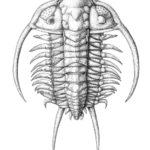- Accessories
Advanced Variable products with swatches
Products variations colors and images without any additional plugins.
- Marble Fossils
- Minerals
- Sculpture fossils
- Sinks Fossils
- Tables Fossils
Morocco is a land full of history and natural wonders, and one of its most fascinating features is the presence of sink fossils. These ancient remnants give us a glimpse into a world that existed millions of years ago. Here’s a closer look at what you need to know about sink fossils in Morocco.
Discovering Sinks Fossils in Morocco
Morocco is a land full of history and natural wonders, and one of its most fascinating features is the presence of sink fossils. These ancient remnants give us a glimpse into a world that existed millions of years ago. Here’s a closer look at what you need to know about sink fossils in Morocco.
What are Sink Fossils?
Sink fossils, also known as "sinks," are fossils that formed in depressions or basins where sediment and other materials collected over time. These areas, often underwater, provided the perfect environment for plants and animals to be preserved as fossils.
Where to Find Sink Fossils in Morocco
1. Erfoud: This town is known as the gateway to the Sahara Desert and is famous for its fossil-rich landscapes. The surrounding areas are dotted with sink fossils, especially trilobites, ammonites, and other marine life that lived over 350 million years ago.
2. Alnif: Located in the southeastern part of Morocco, Alnif is another hotspot for fossil hunters. The region is rich in Devonian and Ordovician fossils, offering a treasure trove for enthusiasts.
3. Merzouga: While Merzouga is famous for its towering sand dunes, it is also a great place to find fossils. The nearby fossil beds contain ancient sea creatures that tell the story of when this desert was covered by a vast ocean.
Types of Fossils You Can Find
1. Trilobites: These are some of the most common and sought-after fossils in Morocco. Trilobites are extinct marine arthropods that lived hundreds of millions of years ago.
2. Ammonites: These spiral-shaped fossils are the remains of ancient marine mollusks. They are often beautifully preserved and make stunning souvenirs.
3. Orthoceras: These are long, straight-shelled cephalopods that lived during the Paleozoic era. They are often found in black limestone, creating striking fossil displays.
How to Explore Fossil Sites
Guided Tours: Many local tour operators offer guided fossil hunting trips. These tours are a great way to learn more about the fossils and ensure that you are exploring safely and responsibly.
Museums and Shops: Visit local museums and fossil shops in towns like Erfoud and Alnif. These places often have detailed exhibits and knowledgeable staff who can provide more information about the fossils and their history.
DIY Exploration: If you prefer to explore on your own, make sure to do some research beforehand. Always respect the natural environment and avoid taking fossils from protected areas.
Why Visit Morocco for Fossils?
Morocco’s rich geological history and diverse landscapes make it a paradise for fossil enthusiasts. The country’s unique fossil sites offer a rare opportunity to see and collect ancient remnants of life from millions of years ago.
Exploring sink fossils in Morocco is not just about finding ancient treasures; it’s about connecting with the Earth’s history and understanding the incredible story of life on our planet. Whether you are a seasoned fossil hunter or a curious traveler, Morocco’s sink fossils are sure to leave you in awe.








